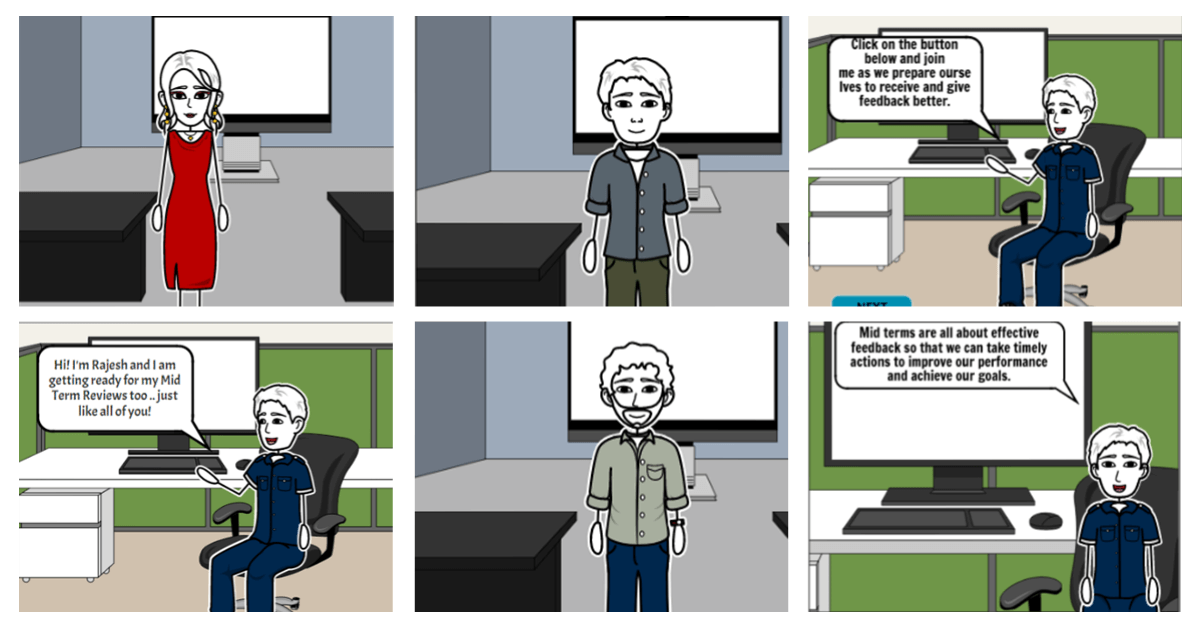
Storyboard
A powerful planning document that streamlines creation
What is a Storyboard?
A picture is a worth a thousand words
A storyboard is a powerful visual aid, usually depicting a user journey, to help drive clarity and alignment. Popularised by Walt Disney as sketches of frames, storyboards are increasingly being used to enhance user experience - learner, customer, employee, et al.
Why Storyboard?
Storyboards have multiple benefits in the process of creating an effective course:
- Stakeholders Gain A Better Insight Into The Instructional Designer's Ideas, bringing everyone on the same page and thereby reducing rework
- They Help Prioritize Focus On Learning Objectives by forcing us to ask if this is the best way to represent this learning content
- They lead to effective storytelling by revealing the flow of the course – no surprise, since it is a technique borrowed from the movie makers!
How is Storyboard relevant to User Experience?
Using a storyboard is an efficient and highly effective method of communication within and between teams in the product design process. Some of the benefits include:
- Puts people at the heart of the process
- Ensures that user flow are ingrained into the design
- Drives constructive criticism and forces prioritisation
- Supercharges the iterative improvement process
What is the best time to create a storyboard?
At Samriddhi, Storyboards finds their place at the head of the product design process before the first product development iteration (pre-production). Depending on the development approach, this can have multiple benefits including:
- in Agile Scrum framework, it provides a quick and visual reference to identify what work needs to be done. It is often combined with Kanban metrics.
- in Kanban framework, practitioners often use the storyboard to manage flow of backlog items theought their stages of development. Storyboards are designed to track the team's work process and backlog items (cards) are moved from column to column to track their progress.